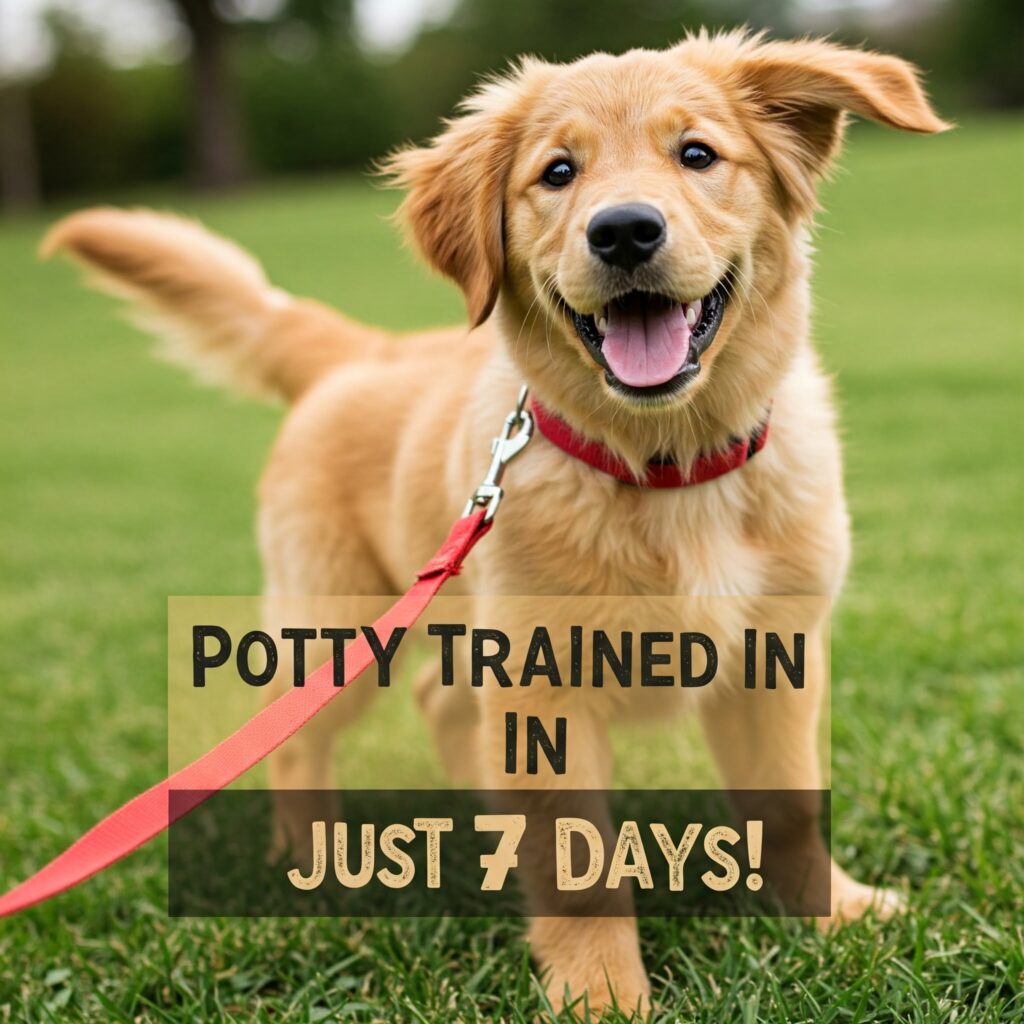
Getting your puppy to go potty outside isn’t just about keeping your house clean—it’s about building lifelong healthy habits. Potty training can feel overwhelming, especially for new dog parents, but with a proven 7-day strategy, you can make it a smooth experience for both you and your pup.
🔬 Understanding Puppy Bladder and Bowel Development
The Science Behind Puppy Potty Needs
Puppies have small bladders and limited control at first. A general rule of thumb is:
👉 1 hour of bladder control for every month of age.
So, a 2-month-old pup may only hold it for 2 hours. Bowel control also takes time, usually improving around 4 to 6 months of age. That’s why early, consistent training is key.
Why Early Training Matters
Early potty training:
- Builds strong habits
- Reduces household accidents
- Helps puppies feel secure and confident
Studies show puppies started on consistent routines are 80% more likely to succeed in housebreaking.
🛠️ Preparing for Successful Potty Training
Setting Up a Puppy-Friendly Environment
Start with:
- A crate that’s cozy but not too large
- A designated potty area (outdoors or indoor pads)
- Barriers like baby gates to control your puppy’s roaming space
Pro Tip: Puppies are less likely to soil the area where they sleep. Crate training can help reinforce this.
Must-Have Potty Training Supplies
| Item | Purpose |
|---|---|
| Leash | For scheduled potty walks |
| Crate | Safe space that encourages holding bladder |
| Potty pads / grass patches | For indoor training (if applicable) |
| Enzymatic cleaner | Removes odor to prevent repeat accidents |
| Treats | Positive reinforcement for success |
| Timer / Reminder app | Keeps you on track with regular breaks |
📆 Day-by-Day Potty Training Plan
✅ Day 1: Build the Schedule & Supervise
- Set up a routine: feeding, potty, play, and sleep
- Take your pup out after eating, napping, or playing
- Use a cue word like “Go potty”
🕑 Take breaks every 1-2 hours
✅ Day 2: Introduce the Crate & Potty Spot
- Let your pup associate the crate with comfort
- Take them to the same potty spot after meals
- Praise when they go—build that positive habit!
✅ Day 3: Reinforce the Cue
- Say your cue word while they go potty
- Reward immediately with treats and affection
- Increase the number of breaks to boost consistency
✅ Day 4: Handle Accidents Calmly
- Clean up accidents with enzymatic cleaner
- Avoid punishment—it creates fear
- Stay calm and refocus on routine
✅ Day 5: Let Them Try Independently
- Start giving your pup short periods without supervision
- Watch for signs like sniffing or circling
- Take them out immediately when they signal
✅ Day 6: Transition Fully Outdoors
- Shift from indoor pads to outdoor potty if applicable
- Stick to the same spot and same cue
- Celebrate wins!
✅ Day 7: Reassess & Reinforce
- Review progress—most puppies will be mostly trained
- Maintain the schedule for continued success
- Keep rewarding good behavior
🧠 Expert Tips & Troubleshooting
- Use positive reinforcement only
- Don’t expect perfection—accidents are part of the process
- If you face frequent accidents, revisit your routine
📚 Recommended Read: The Puppy Primer by Patricia McConnell
🌐 External Resource: Visit American Kennel Club (AKC.org) for additional expert tips.
🧳 Bonus: Puppy Potty Training Traveller Checklist
Whether you’re traveling or just stepping out for a few hours, here’s a handy checklist to keep your training on track:
| Essentials | Packed? ✅ |
|---|---|
| Crate / carrier | |
| Leash and harness | |
| Potty pads / grass patch | |
| Waste bags | |
| Favorite treats | |
| Enzymatic spray cleaner | |
| Water bowl & bottle | |
| Puppy food & feeding bowl | |
| Timer or training app | |
| Printed potty schedule |
🐾 Final Thoughts: Your Puppy’s Clean Start
Potty training a puppy in 7 days is possible with consistency, patience, and the right tools. Stick to the plan, stay positive, and celebrate your puppy’s small wins every day. You’ve got this!
Also Read:
